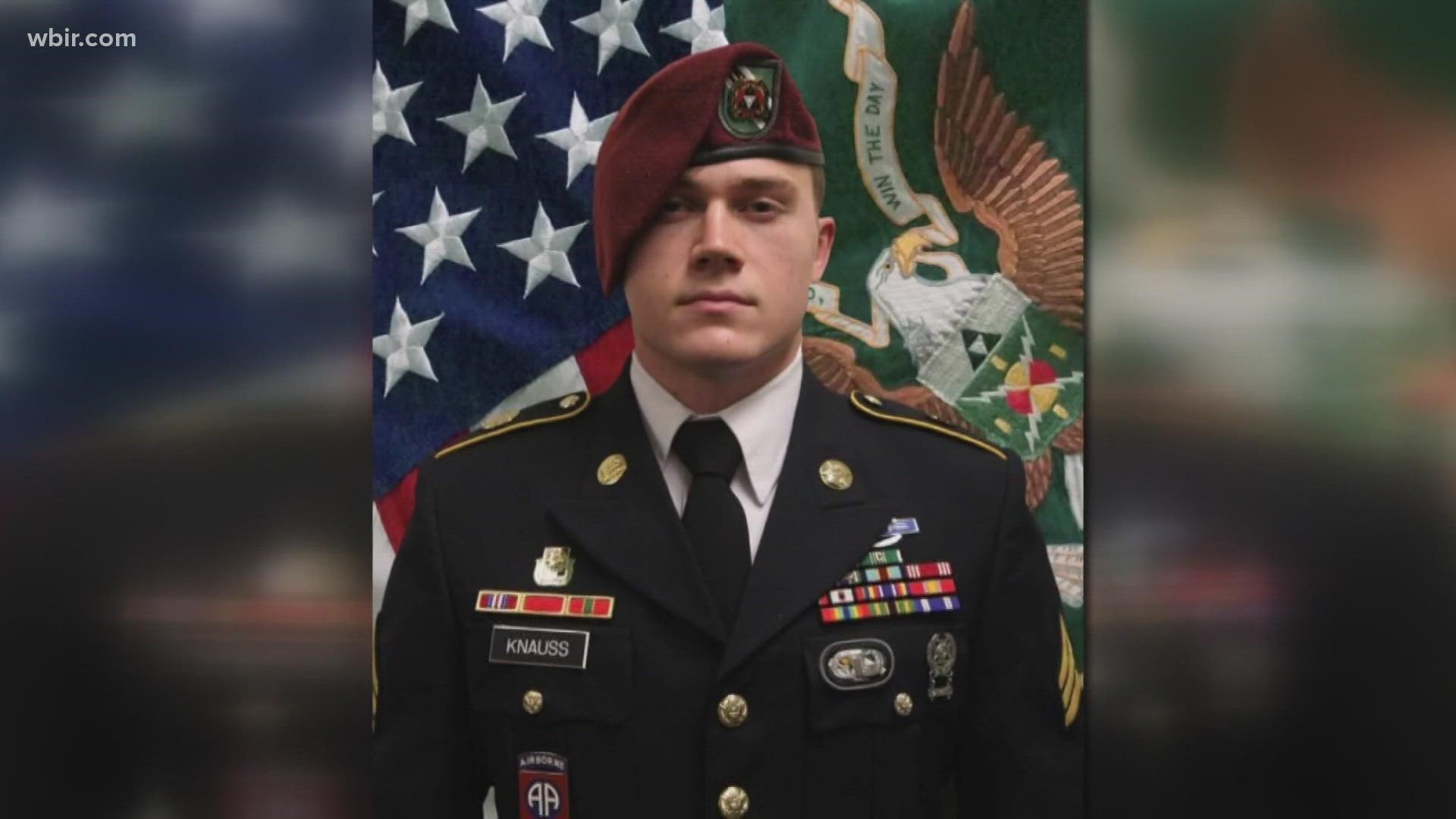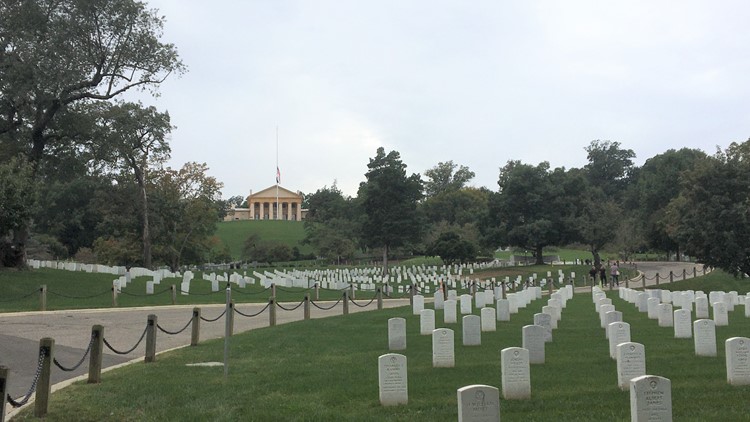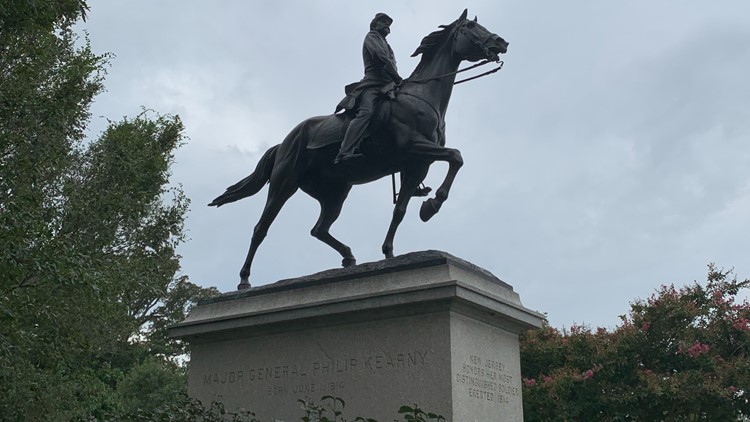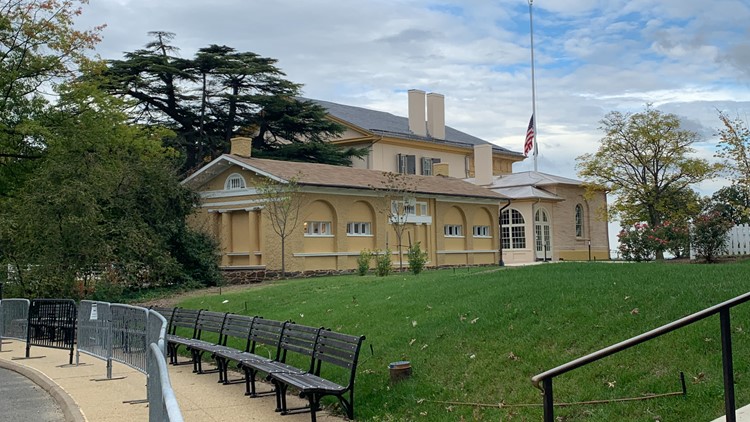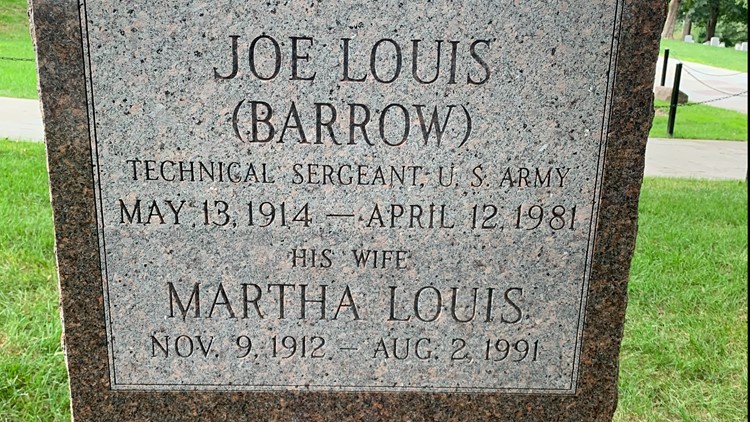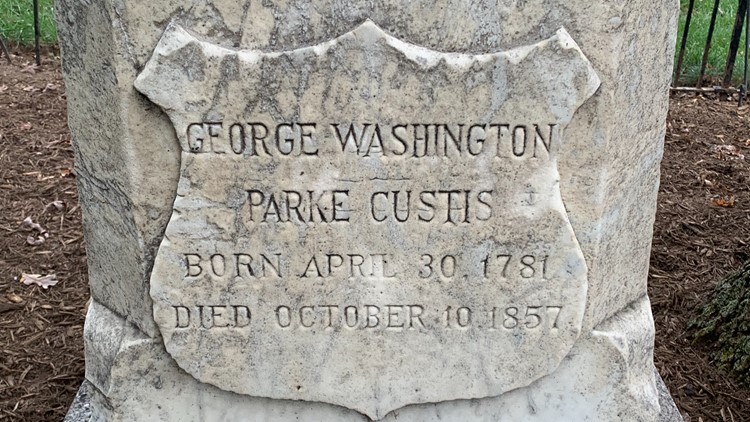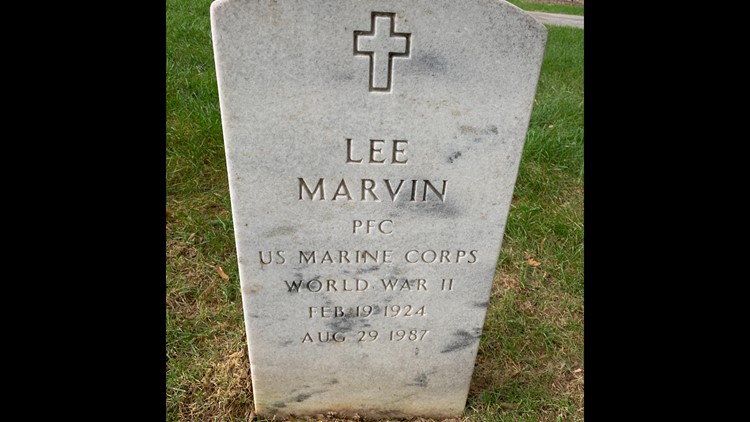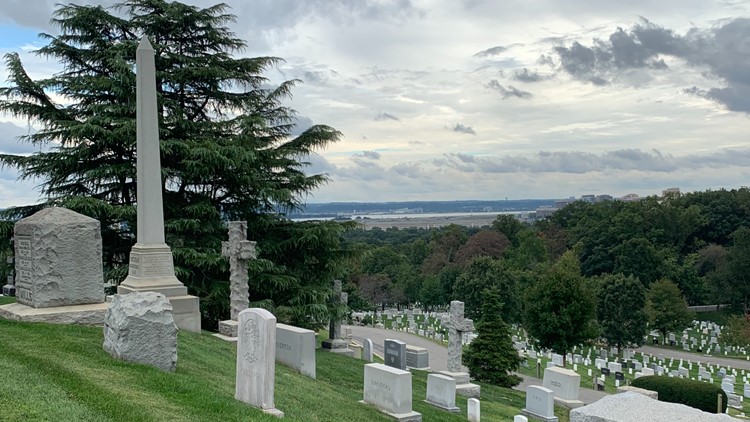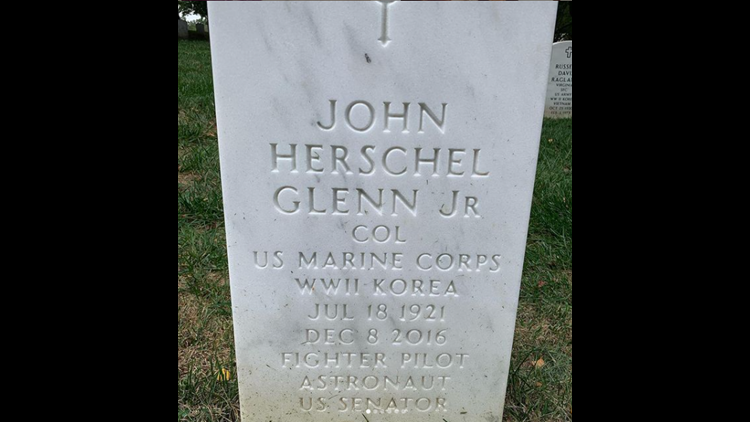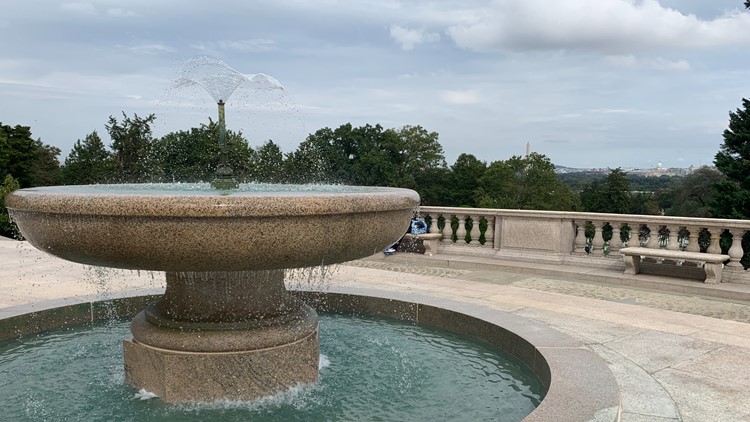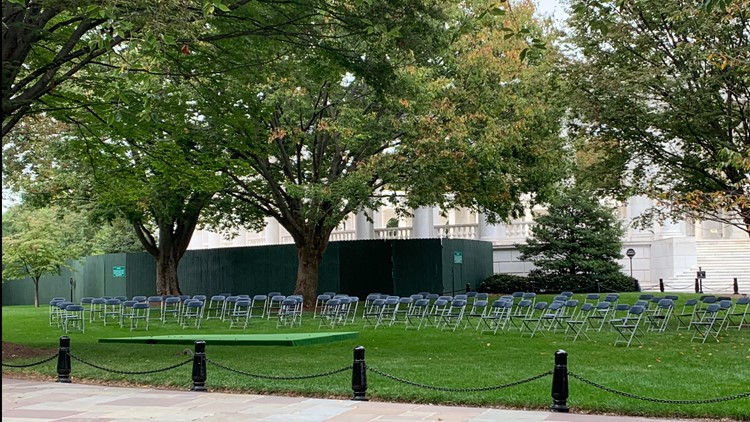ARLINGTON, Va. — Staff Sgt. Ryan Knauss’s final resting place is sacred ground in the United States.
Since the Civil War, some of America’s greatest heroes have been buried at Arlington National Cemetery, just across the Potomac from Washington, D.C.
Two presidents, John F. Kennedy and William Howard Taft, rest here, along with more than 400 Medal of Honor recipients, scores of generals and admirals, many astronauts and 14 U.S. Supreme Court justices, including Thurgood Marshall, the first Black man appointed to the court.
The 640 acres hold tales of sacrifice, sorrow and success. Men and women lie there who led through the darkest moments of the United States. It’s also the last resting place of people who quietly served their country, seeking neither favor nor fanfare.


Knauss, 23, of Knox County, was killed in a bombing Aug. 26 during the airport evacuation at Kabul, Afghanistan. He was posthumously awarded the Purple Heart and he will be interred at Arlington on Tuesday.
The cemetery, which holds an estimated 400,000 people, is located among hills that once belonged to the descendants of George Washington. Virginian and career military officer Robert E. Lee, one of America’s most respected military leaders at the time, married into the family and so came to live in the big mansion on the hill.
But when Virginia joined the Confederacy in 1861, Lee sided with the Old Dominion and left the U.S. Army. Shortly thereafter, when the Union Army moved in, his wife, Mary, fled.
The Army quartermaster, Brig. Gen. Montgomery C. Meigs, saw the grounds of the Custis Lee plantation as an opportune place starting in 1864 to bury the war dead, according to historian Robert M. Poole in his book, "On Hallowed Ground".
The Lees never came back. Today graves surround the home, known as Arlington House, and it’s designated as a memorial to Lee.
Arlington National Cemetery: America's hallowed burial ground
TENNESSEE AND ARLINGTON
Americans from across the U.S. are buried at Arlington, including people from Tennessee. They include at least one Tennessee Medal of Honor recipient.
Here’s a look at some of the Tennesseans and people who have played a part in Tennessee’s history who are buried at Arlington.
*Master Sgt. Michael L. McNulty was born in Knoxville in October 1968 and died June 17, 2005, at age 36 in Qaim, Iraq, during combat. McNulty was a Green Beret with the U.S. Army Special Operations Command HQ, according to the East Tennessee Veterans Memorial Association.
He was awarded the Bronze Star and Purple Heart.
*Josephus Samuel Cecil, received the Medal of Honor for conduct during the Philippine Insurrection. Born at New River, Tenn., south of Huntsville, he served with the 4th Tennessee Infantry from July 1898 to May 1899. He then served with the 19th U.S. Infantry and was in the Philippines during the Insurrection in March 1906.
According to Arlington’s website, his citation reads: 'While at the head of the column about to assault the first cotta under a superior fire at short range personally carried to a sheltered position a wounded man and the body of one who was killed beside him.”
*Virgil Bowden, of Fentress County. He was 27 and an Army private when he was killed in action in France during World War I. He initially was interred at the American Cemetery in Meuse, France, before being moved to Arlington, which wasn’t uncommon after the war.
*Albert Gleaves, commander of the U.S. Navy’s cruiser and transport force during World War I. He was from Nashville. A statue honors him at the Tennessee Capitol.
*Rufus J. Hyman, an infantry Army captain killed in 1950 during the Korean War. He was from Memphis and was 23.
Hyman was missing in action, and his unidentified remains first were interred along with those of hundreds of others at the beautiful Punchbowl cemetery on Oahu in the Hawaiian Islands. In February 2019, forensic and genetic exams finally confirmed who he was.
*William Jennings Bryan. No, he was not a Tennessean. But Bryan took part in the famous Scopes Monkey Trial in July 1925 during which a teacher was prosecuted for teaching about evolution. The trial was held in the Rhea County Courthouse, which stands today.
Bryan died less than a week after the trial ended.

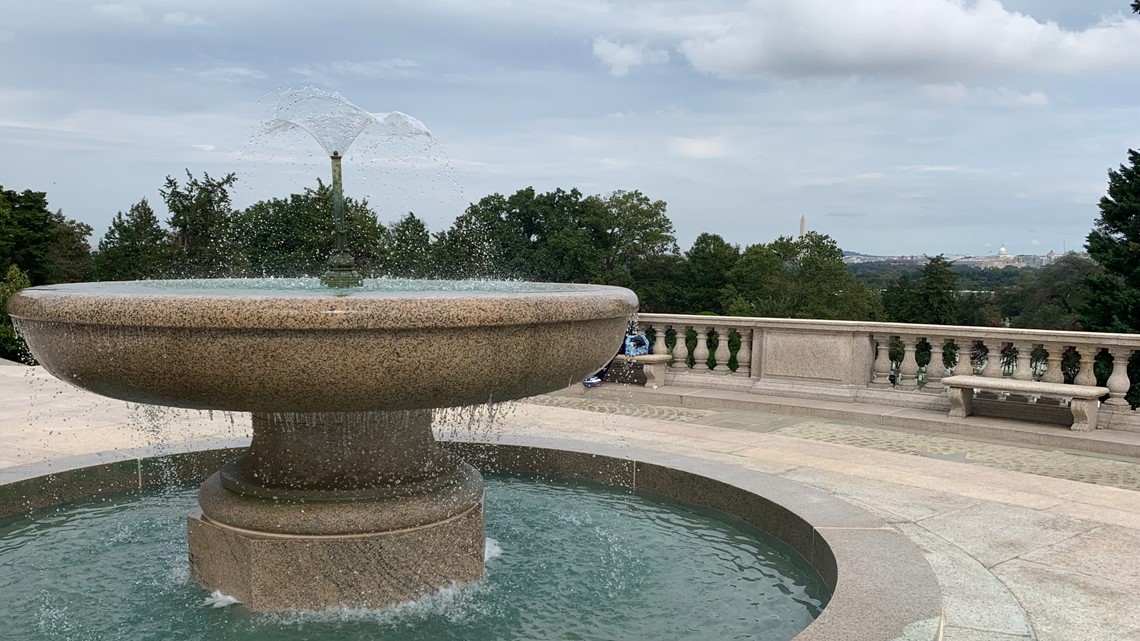
WITNESSES TO HISTORY
Burials at Arlington began in May 1864.
The first service member to be interred was Pvt. William Christman of Pennsylvania. A poor man, the 21-year-old infantryman died May 11,1864, from disease, according to the Arlington website. He enlisted to fight for the Union after a brother was killed in battle.
The first combat casualty to be buried at the military cemetery was Pvt. William B. Blatt, also of Pennsylvania. He died May 13, 1864, from wounds suffered during the brutal Battle of the Wilderness in Virginia.
The first person to die in an airplane crash also is at Arlington. Aviator and 1st Lt. Thomas Selfridge was riding with air pioneer Orville Wright in September 1908 in a demonstration flight at Fort Myer, near Arlington, when the plane went down.
Selfridge suffered mortal injuries; Wright suffered serious injuries but lived until 1948.
Arlington is the resting place of several people who played significant roles in the life and history of Abraham Lincoln.
His eldest son, Robert Todd Lincoln, was buried there in 1926 after a long and distinguished career in politics and government. Lincoln was at Appomattox with Gen. Ulysses S. Grant when Lee surrendered, and he was at his father’s bedside after actor John Wilkes Booth shot the president in April 1865 in Ford’s Theater in Washington.

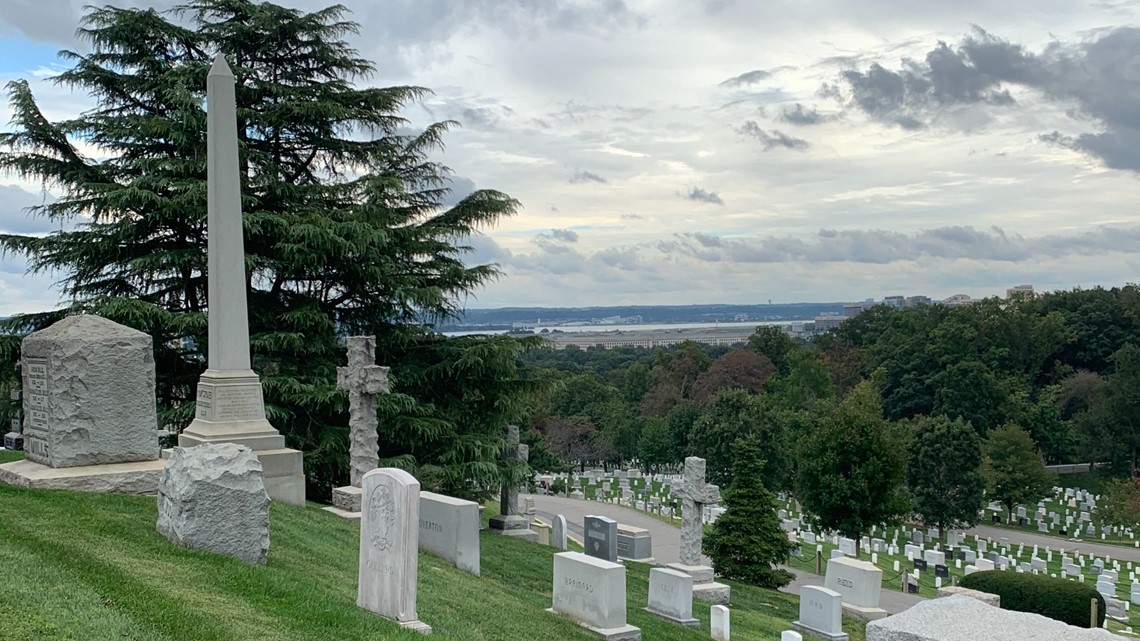
Also at Lincoln’s bedside after the shooting was James R. Tanner. While serving as a Union corporal during the Civil War, according to Arlington’s website, Tanner of New York suffered serious wounds at the Second Battle of Bull Run in 1862.
Doctors amputated both legs below the knee. Tanner went back to New York, learned stenography and was outfitted with prosthetics. He returned to government service, taking an apartment across from Ford’s Theater, according to historynet.com.
After Booth shot Lincoln, Tanner was called on to act as a stenographer and was present as leaders gathered around the dying president’s bedside. Tanner was 21.
Tanner also was present during the trials for the people identified as conspirators in the assassination. He died in 1927.
Lastly, the man who led a company that tracked down and captured Booth after the assassination is also buried at Arlington. An Irishman born in Canada, Capt. Edward P. Doherty was a cavalry officer.
One of the company shot Booth in the back of the head as he hid in a barn in Port Royal, Va. Doherty was with Booth when he died, according to irishcentral.com.
While Arlington is primarily considered a place for people of military service, people noteworthy for other achievements in life rest there.
Journalist Merriman Smith was working for the United Press International news service in November 1963 when Lee Harvey Oswald assassinated President Kennedy. Smith was part of the press pool in the Dallas motorcade and is credited with getting out first word of the attack. He received a Pulitzer Prize.

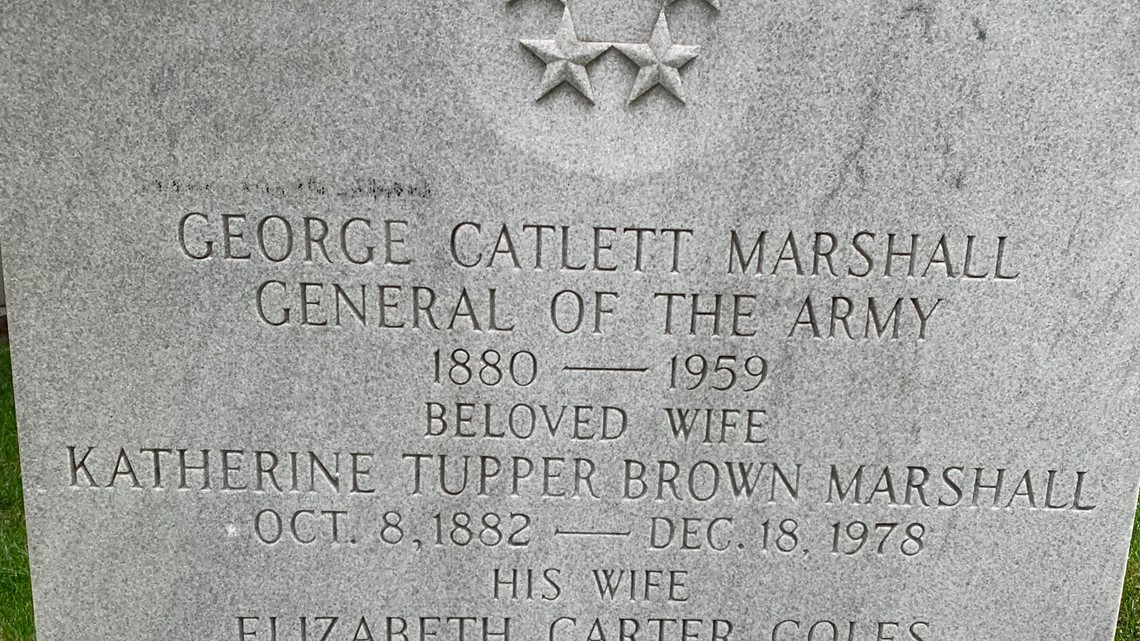
Two Academy Award winners are buried at Arlington – Lee Marvin and Fay Bainter. Marvin won an Oscar for “Cat Ballou” and Bainter won an Oscar for her role in “Jezebel”.
Among the well-known writers buried at Arlington is Dashiell Hammett, who wrote the novels “The Maltese Falcon” and “The Thin Man”.
And not to be forgotten is Charles Pierre L’Enfant, the Frenchman who was a friend to George Washington, a soldier and an architect and city planner. It fell to him in the 1790s to prepare a master plan for creation of Washington, D.C.
While he lived a dashing life, L’Enfant died penniless at a Maryland farm in 1826. Decades later Congress ordered that he be reinterred and given formal recognition for his service to the United States. He is buried near the Custis Lee Mansion on top of the hill, looking out toward the Lincoln Memorial and the rest of the city he once planned.

